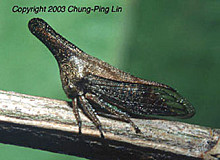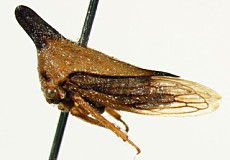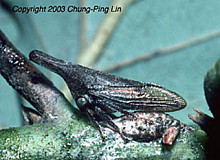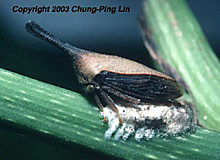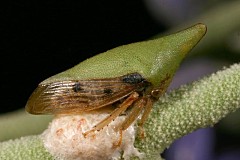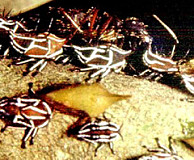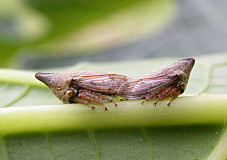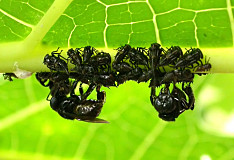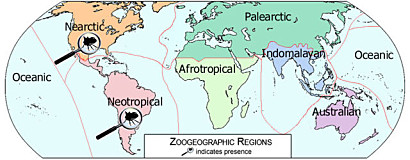Goding 1892a
Funkhouser 1951a
Metcalf and Wade 1965a
Deitz 1975a
Dietrich and Deitz 1991a
McKamey 1998a
Godoy, Miranda, and Nishida 2006a
Wallace 2010a
Animalia → Arthropoda → Insecta → Pterygota → Hemiptera → Auchenorrhyncha → Cicadomorpha → Membracoidea → Membracidae → Membracinae
Aconophorini Goding, 1892
Selected references
Overview
The New World tribe Aconophorini includes the genera Aconophora, Calloconophora, and Guayaquila, as well as the genus Acanthicoides, which is of uncertain position because its type species is based on a presently unidentifiable nymphal specimen. Members of the tribe are gregarious and subsocial, with females guarding their egg-masses and usually remaining with their offspring throughout nymphal development. They occur from sea level to elevations of more than 3000 m, in habitats ranging from tropical forests to dessert.
Taxon images
Aconophorini
Distribution
Neotropical and Nearctic regions: from northern Argentina to Arizona in the southwestern United States; present in Trinadad, but not elsewhere in the West Indies.
Diagnostic characters
Pronotum with compressed anterodorsal horn. Forewing claval apex truncate. Pro- and mesothoracic tibiae narrow to subfolieacous. Metathoracic tibia with well-developed cucullate setae in rows I and II; row III with small cucullate setae (in row or band) or cucullate setae absent; tarus longer than pro- or mesothoracic tarsus. Fifth instar nymph pronotum usually with dorsal horn bearing apical pair of laterally directed processes; mesothorax and as many as 4 abbominal terga usually with long submedian scoli.
Ecology
Members of this tribe are recorded from 17 plant families. Several species feed on tropical crops, and Guayaquila pallesens may occasionally injure papaya and avocado. Ants, vespid wasps, and meliponine bees that collect honeydew from some aconophorines may protect them from parasitism and predation.
Behavior
As far as is known, all aconophorines are gregarious and subsocial; the females guard their eggs and usually remain with aggregations of nymphal offspring through their development.
Taxonomic constituents
Acanthicoides Metcalf, 1952 Metcalf, 1952
Aconophora Fairmaire, 1846 Fairmaire, 1846
Calloconophora Dietrich in Dietrich and Deitz, 1991 Dietrich in Dietrich and Deitz, 1991
Guayaquila Goding, 1920 Goding, 1920
Prepared by
Lewis L. Deitz and Christopher H. Dietrich, 17 October 2013.


